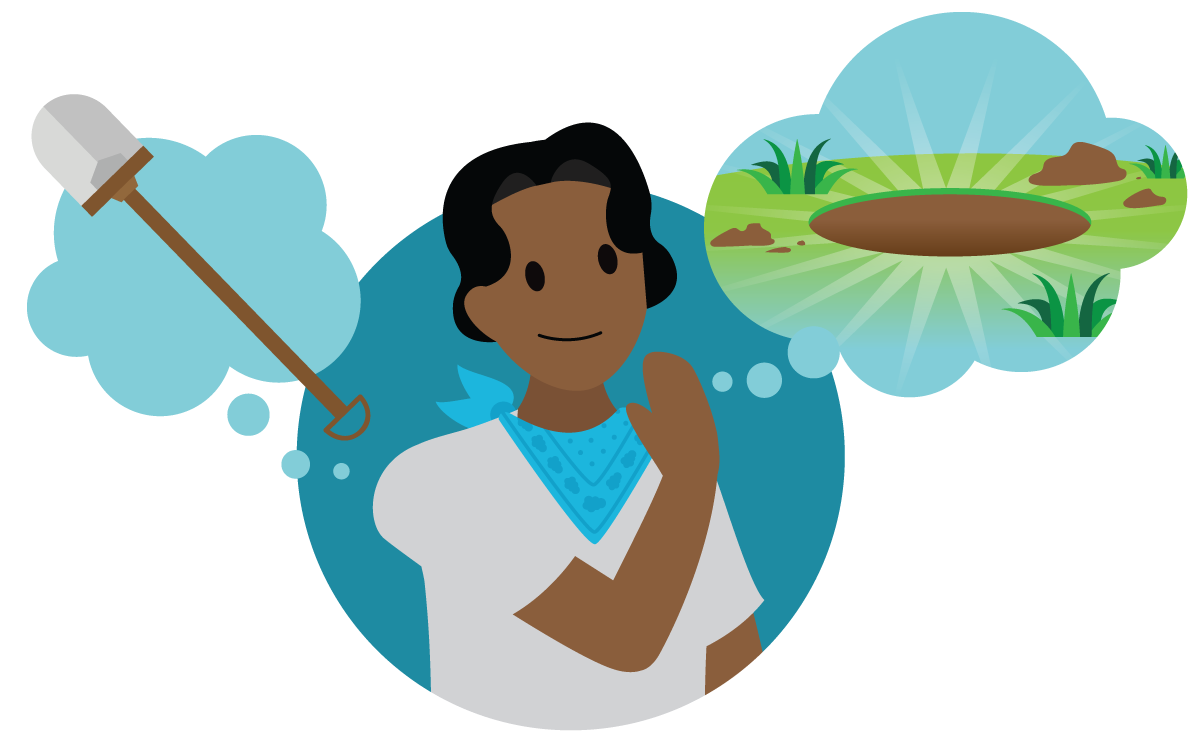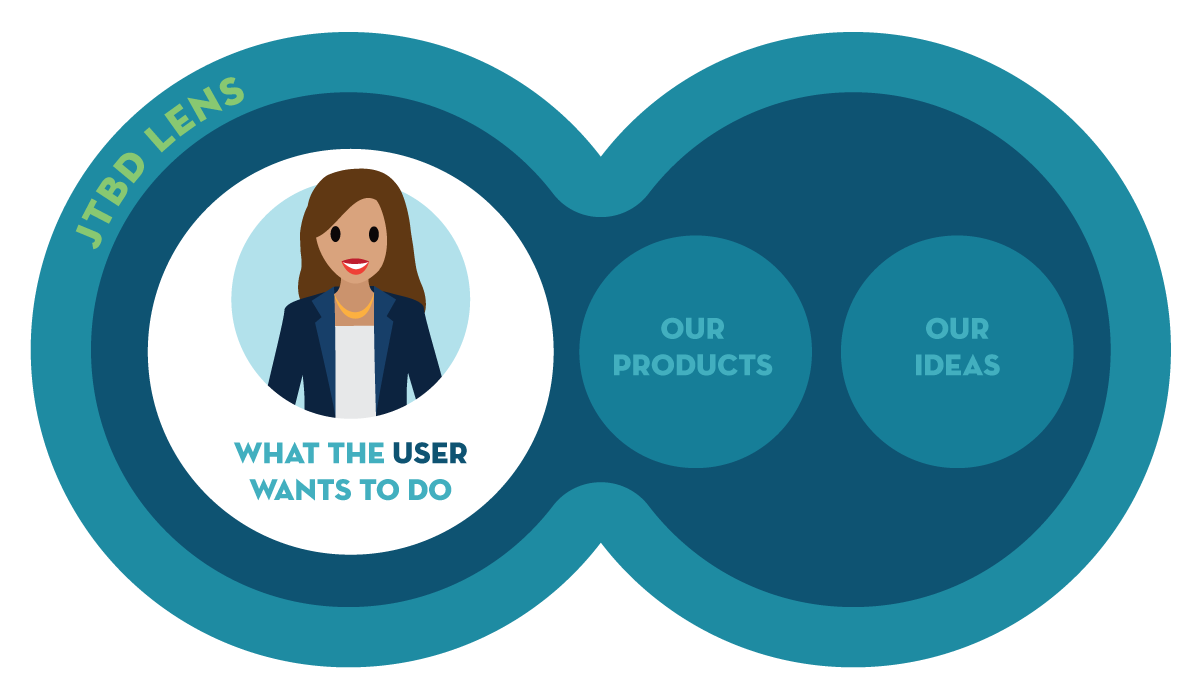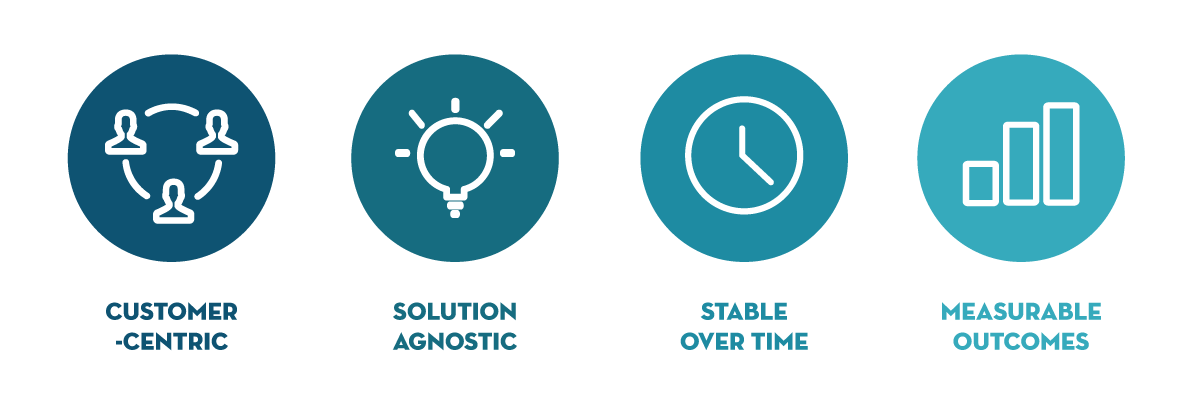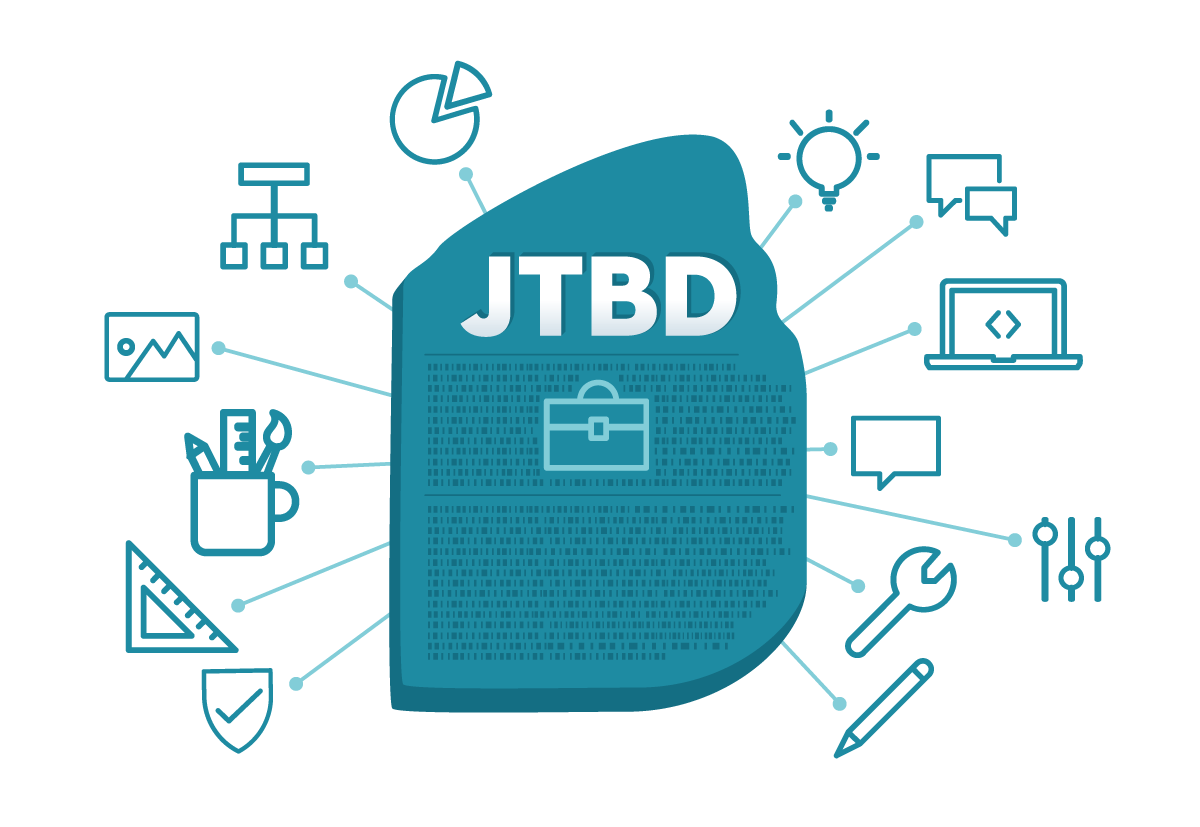Learn about the Jobs to be Done Framework
Learning Objectives
After completing this unit, you’ll be able to:
- Explain the core principles of the JTBD framework.
- Describe how the framework can drive success in design work.
Do You Want to Buy a Shovel, or Do You Need a Hole in the Ground?

No doubt you’re familiar with the age-old question of which came first, the chicken or the egg. But do you know the one about the customer, the shovel, and the hole? It goes something like this: When a customer buys a shovel, are they really interested in the shovel, or do they actually just want a hole in the ground?
The Jobs to Be Done framework centers around this question. Put another way, Jobs to Be Done posits that while businesses may market products and services, what customers are really buying is solutions to their problems. Seen through the lens of Relationship Design, Jobs to Be Done asks you to consider the shovel-or-hole question from the perspective of your users: Rather than starting with ideas about what your product or service might look like, you need to look instead at what your user is really trying to accomplish. What job or task do they need to get done? If what they really need is a hole in the ground, maybe a hole-digging service would fit their needs better than selling them a shovel.
It All Started with a Milkshake
Let’s dig into how Jobs to Be Done works with a real-life business example. Have you heard the story of an iconic fast-food restaurant’s milkshake? Years ago, the fast-food chain was trying to improve the sales of their milkshakes. They first took an ideas-driven approach to the problem. The team brainstormed solutions that included bigger shakes, more flavors, and bundled shakes with their euphoria-inducing kids’ meals. Strangely, they found that their sales weren’t going up despite all this planning.
Clay Christensen, one of the creators of the Jobs to Be Done framework, was brought in with his team to help crack the case. They studied the restaurant for an entire day, noting that the majority of milkshakes were sold to adults before 8:30 AM. The customers who bought milkshakes bought only the milkshakes, and they almost always got into their car and drove off with it rather than eating in the restaurant. It turns out that the restaurant had been assuming that kids were the target consumers who would want a milkshake with their meal, but the sales suggested otherwise.

The team began asking milkshake buyers, “What job are you trying to get done that prompts you to buy a milkshake so early in the morning?” Turns out, all the milkshake buyers had a similar task they were trying to accomplish: a “job” in Jobs to Be Done parlance. They had a long drive to work and needed something that would keep them energized until their break time. They also wanted something they could hold with one hand while driving and would last for the whole commute. Turns out, the milkshake was actually competing against other breakfast foods: bananas, donuts, and even bagels!
Surprising, right? Normally when you approach solutions, you think about your customers or you think about your own products and services, and then come up with ideas. The Jobs to Be Done approach that Christensen and his team used to observe the restaurant’s customers—and, as you discover shortly, help make a better milkshake—has us consider first and foremost what the customer is trying to achieve.
The Jobs to Be Done Framework
The Jobs to Be Done framework says that people buy or hire products and services to get a specific job done. Seeing users through this lens provides a framework for discovering and defining jobs and needs, and it ties those jobs and needs to measurable outcomes defined in terms of success for the user. When you’re able to help users do what they need to do, they wind up valuing your products and service more. This leads to increased adoption, greater trust in our offerings, and an overall stronger and more valued relationship with you. Talk about a win-win!
The fast-food restaurant was working on creating the best dessert they could. But their customers weren’t necessarily looking for dessert—their job was getting to work with a full belly and staying energized until that first break time. This was both a product problem and a relationship problem: They didn’t understand their customers. That realization changed everything.
The restaurant set off on a new trajectory after realizing their customers’ jobs. They made the shakes thicker, added pieces of fruit for a healthier breakfast, and even gave people a prepaid swipe card to be used in the drive-through lines. By taking a jobs-driven approach, the team ensured that all of their planning and research would in fact deliver solutions that would meet their customers’ needs. This time around, milkshake sales increased by 7x!

While a traditional approach to innovation can result in creative and ground-breaking ideas, it can also lack repeatability and prevent you from focusing on the ideas that provide the most value to your customers and strengthen your relationships with them. Businesses have an imperative to listen to their customers—your business can’t maintain relevance in the marketplace if it doesn’t.
With a jobs-driven approach, you first deep dive into customers’ use cases, analyze their functional, emotional, and social needs; and then craft solutions defined by those. This approach to innovation places the customer at the center of product development. You forget about your own area of expertise or your title, and instead focus on what your customers are trying to do. The success of solutions depends on how well the underlying needs and motivations of your customers are met.
Research has shown that the ability for users to get their functional jobs done is one of the biggest drivers for customer satisfaction and adoption. Another big benefit to Jobs to Be Done is that it addresses the functional aspects of user jobs while also including a mandate to address social and emotional needs.
Jobs to Be Done Principles
There are many ways to discover and define jobs, and no one way fits all teams and workflows. However, all of these strategies do share the following common principles.

Customer-centric
Jobs are identified through conversations with your customers, not with you and your team. The customer is at the center of all new products, features, and innovations.
Solution Agnostic
Don’t start with solutions. Instead, start by looking at jobs only. When you describe a job as intrinsically tied to an existing solution, you miss the chance to innovate on behalf of your customers.
For example, the statement, “I need to embed a lead form on my website” contains a solution: “lead form” and technology “website.” By digging deeper into why someone needs to do this, you arrive at a solution agnostic job statement: “I need an easy way to get help from a salesperson.” There are hundreds of ways someone might better capture prospects and increase revenue. When you take a step back to understand what the customer is really trying to do, you can broaden your scope of innovation and focus on the customer rather than solutions that already exist.
Stable Over Time
Work from the premise that customers’ objectives and needs are relatively stable over time. If you find yourself frequently changing the jobs and needs, something’s wrong, and you might need to return to the drawing board.
Measurable Outcomes
If the way you’ve captured a job leaves you wondering how you know that you’ve delivered that job for your customer or user, revisit it! People want products or services that help them get a job done better.
A Quick Exercise
Ready to put the Jobs to Be Done principles into action? Here’s a quick exercise: Pretend you’re helping the fast-food restaurant innovate on its breakfast menu. Interview a friend about their morning breakfast routine, having them describe it in detail, like a scene in a movie—complete with setting, characters, and relevant backstory. See if you can identify their breakfast job to be done based on what you hear. Take all four principles into account as you work!
Jobs to Be Done for Designers
As a designer, you’re already customer-focused. Adding this framework into the mix makes that focus even sharper and more actionable.
Jobs to Be Done is a great tool to add to your designer’s toolkit. It excels at translating design-driven work to an organization that speaks a different language and values excellence in other areas, like operations or tech innovation. When folks in other organizations better understand why design work is important, they’re more apt to engage with your efforts and internalize the learnings you’ll share along the way. You, as a designer, are in turn able to align more closely with (and have a bigger impact on) what really moves the needle for the business as a whole.

What’s Next?
Now that you’ve explored the Jobs to Be Done theory and some of its principles, let’s examine the key elements of the framework. Onward!